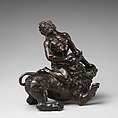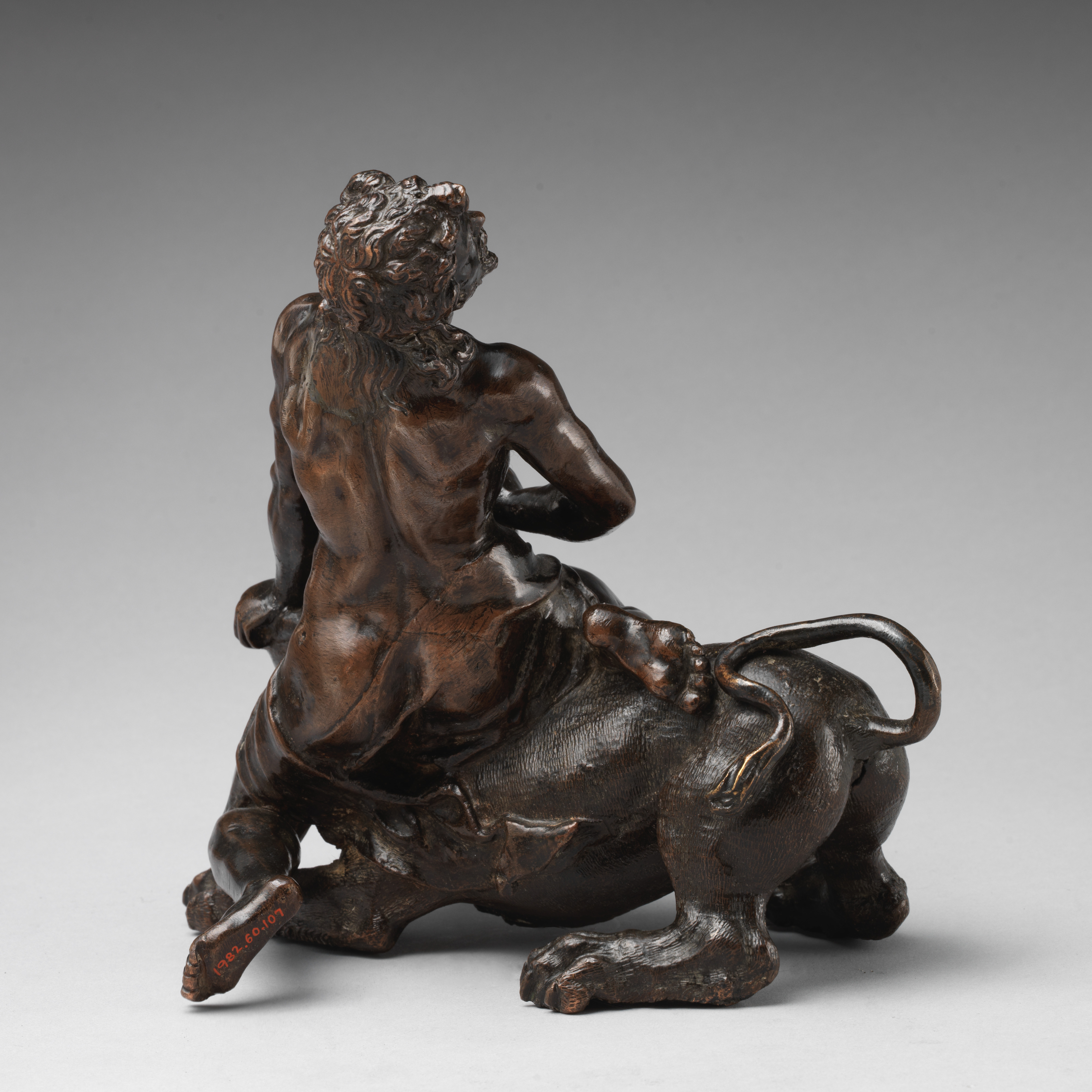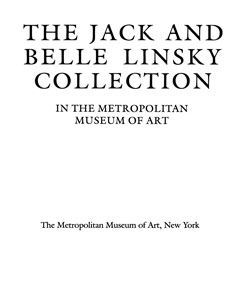Samson and the Lion
This is a relatively crisply chased example of a composition in which the lion’s gaping mouth serves as an inkwell. The model is frequently encountered in disappointing casts. Attributions in the past have run a wide gamut, from Pollaiuolo to Tiziano Aspetti. Anthony Radcliffe has ascribed the Samson statuettes to Bernardino Danese, the seventeenth-century Roman founder, noting a resemblance between the lion in a good example of the type in the Plymouth City Museum and Art Gallery and the two lions that adorn the pedestal of the bust of Paolo Giordano II Orsini in the same museum.[1] The Samson and the Orsini bust in Plymouth share the same early provenance.[2] When actually placed side by side, however, the lions in Plymouth are not so compellingly similar in modeling or in chasing. Those under the bust are conventional Baroque heraldic beasts tooled with relatively rigid parallel strokes. Bernardino Danese’s main documented efforts—various bronze castings for Bernini’s Cappella del Sacramento (of 1673–75) in Saint Peter’s—are works of a much higher technical order than any of these small bronzes. Radcliffe may be right to trace the Samson’s flowing design to the seventeenth century, but we are no closer than before to knowing the name of its author.
[James D. Draper, 1984]
Footnotes:
[1] See A. Radcliffe, “Two Bronzes from the Circle of Bernini,” Apollo n.s. CVIII (1978), pp. 418–22, with a full account of earlier literature; A. Radcliffe, in An Exhibition of Old Master and English Drawings and European Bronzes. . . on loan from The City Museum and Art Gallery, Plymouth, London, Sotheby’s, 1979, no. 2, pp. 32–33, citing numerous other versions, among them three said to be in the Metropolitan Museum. In 1982, the two then in the Museum were deaccessioned once the superiority of the Linsky example was recognized.
[2] The collection of the Marchese Leonori of Pesaro (sale, Christie’s, London, January 27–30, 1772, nos. 31, 86, both as by Alessandro Algardi).
This image cannot be enlarged, viewed at full screen, or downloaded.
This artwork is meant to be viewed from right to left. Scroll left to view more.






